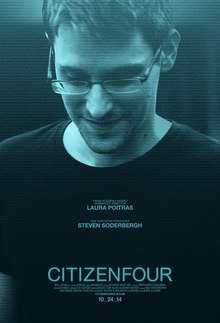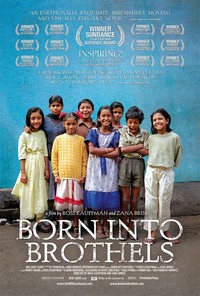
(Pulitzer Prize Finalist)
For most, the name “Bach” probably conjures up this most famous portrait of him – seeming serious, formidable, maybe a bit like a bureaucrat, and ripe with seniority evidenced by the double chin:

This was the time before the invention of photography, and the portraits’ subjects would choose how they’d like to be seen by the viewer, which often amounted to their job functions or what they did. Bach is shown as a composer here holding a piece of music. The title says it’s a 6 voice perpetual canon, so it requires 6 simultaneous melodic lines. But there are only 3 here – where are the others?
After years of puzzling over the riddle, it’s discovered that by reading the 3 lines from our perspective as one is doing normally, combined with the same 3 lines read from Bach’s perspective (ie. backwards and with different clefs), a 6 voice canon would thus emerge as titled. Bach, though principled and disciplined, seems to have a playful and maybe slightly mischievous side, too.
As in this portrait, it is the many sides of Bach that I find fascinating. As one of the best organist of his time playing the hymn at church, he would add many embellishments of his own that confused the congregation who were trying to sing a simple tune. Then as it is now, his music is very demanding for the musicians, and at a rehearsal for a difficult piece he scolded a bassoon player for messing up the part, leading to a brief sword fight between the teacher/student pair. Intending to leave his employer he forced the issue of resignation to an extent that earned him one month of jail time, making him one of the very few western musicians in history to have been imprisoned. While having written music that can seem heavy and overly structured, the man who gave birth to them could be feisty, demanding, and not willing to conform to every rule.
Beyond this seemingly cavalier personality, however, Bach’s skill as a composer was honed through incredible hard work. He was very much self taught and often studied and copied works of many other composers. He also composed at a furious pace - at one point writing 20 to 30 minutes of music for choir and orchestra, then perform it during the Sunday service every week, not to mention he has to teach at school, conduct for other city and church functions, host out of town musicians, and raising 20 children (only 7 survived to adulthood). It’s no surprise that he left very little letters and personal journals. There simply was no time.
What most fascinated me about Bach though, is that while I’ve known him mostly as a composer, it may be more apt to describe Bach as a musical scientist, interested in all aspect of music. As a music virtuoso he played the violin and was one of the best organ players known for his musicality, technique, and improvisation. His technical understanding in musical instruments and player ergonomics, especially the organ, allowed him input to the design and construction of organs, violins, and the fortepiano that would later become the modern day piano. As a scientist and scholar, he composed pieces that systematically navigated all major and minor keys showing the harmonic possibilities afforded by the new tuning system on the keyboard so that instead of staying within the keys of 3 sharps and 3 flats, one can navigate through the entire set of 24 keys. As a teacher, he wrote pedagogical pieces for multiple and progressive levels of musical expertise on keyboard and string instruments that are still played today, training player’s evenness of the left and right hand on the piano, for instance. He was a conductor for choral as well as orchestral groups and driven by his curiosity and gregariousness, was eager to receive many visiting musicians to the city. Being entrepreneurial, he bought and rented out instruments for a fee, and sold compositions for himself and other musicians. In all, Bach was involved in all aspects of music making – the intellectual process of composition, the act of teaching, conducting, performing (individually and collectively), the engineering aspect of instrument design, maintenance, and the politics and commercial procurement of music. He had an obsessive curiosity in the nature and science of music that permeated his art and path of inquiry.
Of all the roles Bach held, he chose to portray himself as a composer first and foremost, probably viewing the written music as his greatest achievement. Yet, at the time of his death at the age of 65 in 1750, Bach was most remembered as an outstanding organist and improviser. His music was considered by the public as too old fashioned, too ornate and dense, belonging to the bygone provincial style of the Baroque period, while the music world had shifted its gaze to the simpler, cleaner international style of the Classical period, with Vienna at its centre and to be represented by masters such as Beethoven, Mozart, and Haydn. Bach’s music would only remain known to his students and a small group of international connoisseurs. It was only when Mendelssohn performed an abridged version of his St. Matthew Passion nearly a century after Bach’s death that the general world had revived the interest in the works of this great master. His music integrated the previously independent principles of “thorough bass, harmony, and counterpoint”. As he was inspired by the Newtonian era’s sense of inquiry for truth, Bach’s exploration in the musical science would set new frameworks for western music and his contribution would be compared to this great scientist. His composition had a great influence on the works of Beethoven, Mozart, Brahms, and Max Reger, and is still much admired and performed for their technical demand, pedagogical value, and artistic beauty the world over, including popular works like Jesu, Joy of Man’s Desiring and the Prelude from the Cello Suite No. 1.
There’s a small story on Mozart’s early encounter with Bach’s works. 40 years after Bach’s passing, his former position as conductor at the St. Thomas School is now held by his student Johann Friedrich Doles. One day, Doles invited Mozart of Vienna to visit the school, and
the choir surprised Mozart with the performance of the double chorus motet Singet dem Herrn ein neues Lied by Sebastian Bach. Mozart knew this master more by hearsay than by his works, which had become quite rare; at least his motets, which had never been printed, were completely unknown to him. Hardly had the choir sung a few measures when Mozart sat up, startled; a few measures more and he called out “What is this?” And now his whole soul seemed to be in his ears. When the singing was finished he cried out, full of joy: “Now there is something one can learn from!”
The learned musician as given the world something to learn from.
================================================
ps. I’m not a Bach expert and don’t have formal music training, and am simply an admirer of his music. I hope this post still provides some value in understanding the composer.
Other Sources:
From the Repertoire: Western Music History through Performance, from Curtis Institute of Music, offered by Coursera
Listening to Music, Lecture 13 and 16, from Yale University
Great Composers – Bach, from BBC
Bach: a Passionate Life, by John Eliot Gardiner, from BBC
Rilling Lectures: St. Matthew Passion
Peter Sellars and Simon Halsey on the St. Matthew Passion performed by the Berlin Philharmonic
John Eliot Gardiner: In Rehearsal (of Cantata 63)
Interviews from All of Bach
An Art of the Fugue, played by Glenn Gould
Bach Performance on the Piano, by Angela Hewitt







